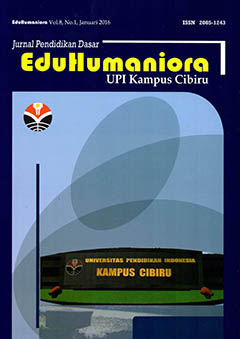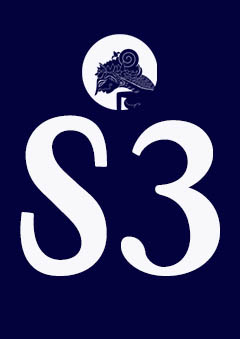DESAIN DIDAKTIS KONSEP PECAHAN UNTUK KELAS III SEKOLAH DASAR
Abstract
Abstract: This research is motivated learning phenomenon obstacle concept of fractions in fourth grade student. Research using DDR design. The purpose of this study to explore the learning obstacle, designing didactic design, implement and analyze the process and results of the implementation design. Data was collected by documentation, interviews, tests and observation. The research findings reveal the five types of barriers to learning students on the concept of fractions. Didactic design that was developed consisting of 4 lesson design and implement learning in third grade elementary school. The implementation results show the tendency of students in a particular response. Most students can achieve learning objectives are set, which means this didactic design can accommodate students' learning trajectory.
Keywords: Learning Obstacle, didactic design, concept of fractions, didactical Design Research
Abstrak: Penelitian ini dilatarbelakangi fenomena learning obstacle konsep pecahan pada siswa kelas IV SD. Penelitian menggunakan desain DDR. Tujuan penelitian ini untuk mengeksplorasi learning obstacle, merancang desain didaktis, mengimplementasikannya dan menganalisis proses dan hasil implementasi desain. Pengumpulan data dilakukan dengan dokumentasi, wawancara, tes dan observasi. Temuan penelitian mengungkap lima tipe hambatan belajar siswa pada konsep pecahan. Desain didaktis yang dikembangkan terdiri dari 4 lesson design dan diimplementasikan pada pembelajaran di kelas III SD. Hasil implementasi menunjukkan terdapat kecenderungan siswa pada respon tertentu. Sebagian besar siswa dapat mencapai tujuan pembelajaran yang ditetapkan yang berarti desain didaktis ini dapat mengakomodasi learning trajectory siswa.
Kata Kunci: Learning Obstacle, Desain didaktis, Konsep pecahan, Didactical Design Research
Full Text:
PDFReferences
Baturo, Annette R. (2004). Empowering Andrea to help year 5 students construct fraction understanding. Proceedings of the 28th Conference of the International Group for the Psychology of Mathematics Education, Vol 2 pp 95–102.
Brown, G & Quinn, R.J. (2006). Algebra students difficulty with fractions: an error analysis. Amt, 62 (4), 28-40.
Bruce, C. et al. (2013). Foundations to learning and teaching fractions: addition and subtraction. Ontario Ministry of Education.
Caswell, R. (2007). Fractions from concrete to abstract using playdough mathematics. APMC, 12 (2), 14-17.
Charalambous, C. & Pitta-Pantazi, D. (2005). Revisiting a theoritical model on fractions: implications for teaching and research. Proceedings of The 29th Conference of The International Group for The Psychology of Mathematics Education, Vol. 2, 233-240.
Haser, C. & Ubuz, B. (2003). Students conception of fractions: a study of 5th grade students. Hacettepe Universitesi Egitim Fakultesi Dergesi, 24 (1), 64-69.
Idris, N. & Narayanan, L. M. (2011). Error patterns in addition and subtraction of fractions among form two student. Journal of Mathematics Education, 4 (2), 35-54.
Istiandaru, A. dkk. (2014). PBL pendekatan realistik saintifik dan asesmen pisa untuk meningkatkan kemampuan literasi matematika. Unnes Journal of Mathematics Education Research, 3 (2), 64-72.
Ojose, B. (2011). Mathematics literacy: are we able to put the mathematics we learn into everyday use?. Journal of Mathematics Education, 4 (1), 89-100.
Siegler, R.S. et al. (2013). Fractions: the new rontier for theories of numerical development. Trends in Cognitive Sciences, 17 (1), 13-19.
Stacey, K. (2011). The PISA view of mathematical literacy in indonesia. IndoMS.J.M.E., 2 (2), 95-126.
Suryadi, D. (2015). Didactical design research (DDR). [Online]. Diakses dari: didi-suryadi.staf.upi.edu/profil
Van de Walle, J.A. (2008). Matematika: pengembangan pengajaran sekolah dasar dan menengah edisi keenam. Jakarta: Erlangga.
DOI: https://doi.org/10.17509/eh.v8i2.5142
Refbacks
- There are currently no refbacks.
Copyright (c) 2017 Kampus Cibiru 2016
EduHumaniora: Jurnal Pendidikan Dasar
Published in collaboration Program Studi PGSD UPI Kampus Cibiru
and
HDPGSDI
This work is licensed under a Creative Commons Attribution-ShareAlike 4.0 International License.















